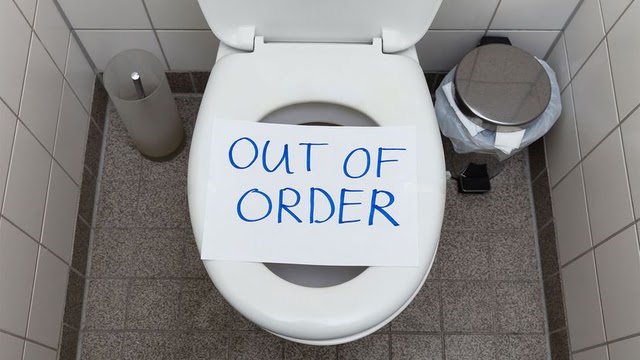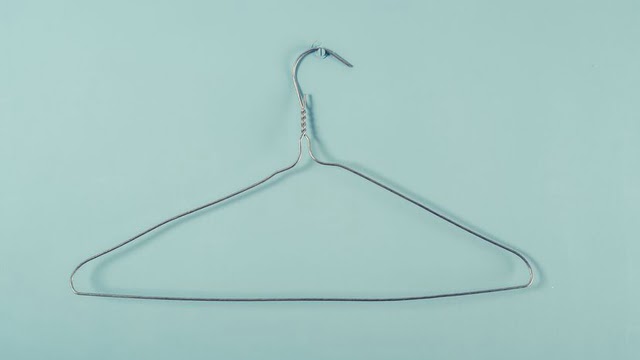Home Improvement

Are you experiencing a clogged toilet but don’t have a plunger? No need to worry because there are alternative methods that can help unclog your toilet. Andrey_Popov/Shutterstock
Getting stuck with a clogged toilet can be a frustrating situation, especially when you don’t have a plunger around. Even with a plunger, some clogs can be stubborn and refuse to budge. Fortunately, there are several options available that are just as effective, or even better than using a plunger. Some of these methods utilize simple household ingredients, while others may require specialized plumbing tools or chemicals to tackle the most challenging clogs.
A toilet gets clogged when foreign objects like tissue or toilet paper get stuck in the U-bend, obstructing the flow of water and causing a blockage. Materials such as thick hair, cloth, and oil can make the problem worse. Therefore, it’s essential to avoid flushing anything that could get stuck in the first place. But even with regular maintenance, clogs can still occur over time. These helpful tips can help you clear a clogged toilet without having to call a plumber.
Method 1: Use a Soap Solution to Eliminate the Clog
- Fill a bucket with hot water.
- Add dishwashing liquid, liquid soap, or shampoo into the toilet. You can also chop a bar of soap into small pieces and place it in the toilet. Another option is to mix a solution of 1 cup baking soda and 2 cups vinegar.
- Carefully pour the hot water into the toilet to dissolve the soap or baking soda and vinegar mixture. The soap or baking soda and vinegar will help the clogged object slide down the pipes, eventually clearing the clogged toilet drain.
- If necessary, repeat the process until the water flows freely.
- Flush the toilet a few times to remove any remaining residue.

You can use hot water and dish soap to unclog your toilet quickly.
Emil Timplaru/Shutterstock
If the clog persists, try repeating the process with a stronger product, like bleach. However, chemical drain cleaners should be avoided because they can corrode the inside of the pipes and cause more significant issues down the road. Additionally, these products are harmful if they come into contact with skin or are inhaled. Enzyme drain cleaners are a safer alternative, but they require a more extended period to work and may not be as effective as other options.
Using Water Bottle Pressure to Clear a Clogged Toilet
- Wear rubber gloves and remove excess water from the toilet by filling a small container and pouring the water into a bucket.
- Fill a large plastic bottle with warm water and place the top into the outlet at the bottom of the toilet.
- Hold the bottle tightly with both hands, remove your thumb, and squeeze the bottle to shoot water into the drain to dislodge the clog. Wear a mask and eye protection in case of splashes.
- Pour hot water into the toilet and check if the water level goes down to confirm the clog has cleared.
- Repeat steps 2-4 if necessary.
- Pour about 3 quarts of boiled water into the toilet to clean out the residue and let it sit for 15-20 minutes before flushing.
Using a Hanger Snake to Clear a Clogged Toilet
- Straighten the bottom end of an old wire clothes hanger while keeping the hook end intact.
- Wrap an old rag around the hook to protect the porcelain.
- Slowly push the wire into the pipe to force out the clog while wearing rubber gloves.

You can straighten a wire coat hanger and use it to snake the clogged toilet.
Using ShopVac Suction to Clear a Clogged Toilet
A wet/dry vacuum, or ShopVac, can be used as a powerful declogger to clear a clogged toilet.
- Remove any bags from the vacuum before using on liquids.
- Attach a hose and small diameter cleaning head to the machine and use it to suck excess water out of the toilet while wearing gloves.
- Push the vacuum hose partway into the drain before the U-bend and use a rag to form a tight seal.
- Turn on the vacuum, and the clog should come out of the pipe and into the ShopVac tank.
If all else fails, use a plumbing auger or snake to break up any blockage. Consult a professional plumber for deeper issues or recurring clogs.
Remember: only flush toilet paper and avoid thicker paper towels, cotton balls, feminine products, and “flushable” wet wipes.
Originally Published: Jul 13, 2011
FAQ
1. What are some common reasons for a toilet to clog?
There are several reasons why a toilet may become clogged. One common reason is flushing too much toilet paper at once. Other reasons include flushing non-flushable items like sanitary products, wipes, and paper towels. Sometimes, clogs can also be caused by a buildup of mineral deposits or tree roots in the pipes.
2. What are some signs that your toilet is clogged?
The most obvious sign of a clogged toilet is when the water doesn’t drain properly after flushing. You may also notice bubbles in the water or hear strange gurgling noises coming from the toilet. If the clog is severe, the toilet may overflow, which can cause water damage to your floors and walls.
3. Can you unclog a toilet without a plunger?
Yes, it is possible to unclog a toilet without a plunger. There are several methods you can try, including using hot water and dish soap, a wire coat hanger, or a wet/dry vacuum.
4. How do you unclog a toilet with hot water and dish soap?
To unclog a toilet with hot water and dish soap, boil a pot of water on the stove and add a few squirts of dish soap. Pour the hot water and soap mixture into the toilet bowl and let it sit for 10-15 minutes. The heat and soap should help break up the clog, allowing it to flush away.
5. How do you use a wire coat hanger to unclog a toilet?
Bend a wire coat hanger into a hook shape and insert it into the toilet bowl. Use the hook to try and loosen the clog, pulling it back towards you. Be careful not to scratch the porcelain with the wire hanger.
6. How do you use a wet/dry vacuum to unclog a toilet?
First, remove as much water from the toilet bowl as possible using a bucket or cup. Then, place the vacuum hose over the toilet drain and turn it on. The suction from the vacuum should help to dislodge the clog.
7. What are some other household items that can be used to unclog a toilet?
In addition to hot water, dish soap, wire coat hangers, and wet/dry vacuums, there are a few other household items that can be used to unclog a toilet. These include baking soda and vinegar, a toilet auger, and a plumber’s snake.
8. When should you call a plumber to unclog your toilet?
If none of the DIY methods work and your toilet remains clogged, it’s time to call a plumber. Additionally, if you notice water backing up into other drains in your home, this could be a sign of a more serious plumbing issue that requires professional attention.
9. How can you prevent your toilet from clogging in the future?
To prevent your toilet from clogging in the future, be mindful of what you flush down it. Only flush toilet paper and human waste, and avoid flushing non-flushable items like wipes, feminine hygiene products, and paper towels. You can also try using less toilet paper per flush or switching to a low-flow toilet to reduce the amount of water used.
10. What should you do if your toilet overflows?
If your toilet overflows, turn off the water supply to the toilet by turning the valve at the base of the toilet clockwise. Then, use towels or a wet/dry vacuum to clean up the excess water. If the overflow has caused damage to your floors or walls, you may need to call a professional water damage restoration company to assess the situation.
11. How do you properly dispose of a clog once it’s been removed?
Once you’ve successfully removed a clog from your toilet, it’s important to dispose of it properly. Do not flush it down the toilet again, as this could cause another clog. Instead, wrap the clog in a plastic bag and dispose of it in the trash.

Brody is a skilled craftsman and gardening expert. From renovating living spaces to cultivating lush gardens, Brody’s knowledge and passion shine through, inspiring readers to embark on their own home improvement and gardening journeys with confidence.






Leave a Reply